Word of God to Words in Print: English Bible Pt. 1
Aaron Lewendon - Eden Bibles & Bible Study Specialist
2000 years after the Word became flesh, there may be as many as 900 different English Bible translations each with a count of around 788,000 words.
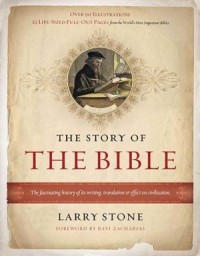
So how did we get from there to here?
From Greek Text to Great Bible
The earliest voicing of the Bible in the native tongue of these islands is attributed to an illiterate herdsman, Cædmon, around 670AD.
Learing Bible stories from the monks of Whitby, he ‘paraphrased’ them as poetic songs to become, perhaps, the first touring British worship artist.
Further north, and less than a century later, the sainted ‘venerable’ Bede is thought to have translated St John’s Gospel into Anglo-Saxon by the time of his death in 735. Although his commentaries and other work survive, what would certainly be the oldest English Bible is lost without trace.
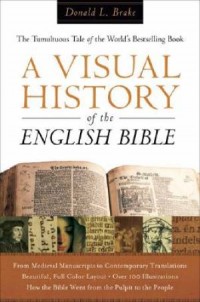
In fact, the oldest English written in the Bible only exists because the local monks weren’t terribly good at translating from the Latin as they preached the Word to their local converts.
No Latin for the Locals
To help themsleves out, the monks scribbled Old English translations of important passages and stories ‘interlinear’ (between the lines) of Latin in some of their richly illustrated manuscripts, such as The Lindisfarne Gospels (950AD) from Northumbria.
In these scriptures, for the first time, the Word of God in English appears with a sound and meaning we can almost recognise: as in ‘The Lord’s Prayer:
Fader usær ðu arðin heofnu, sie gehalgad noma ðin..." (Northumbrian 'Gloss')
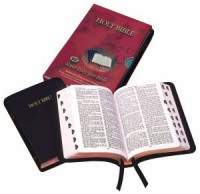
Enter the Normans: Exit the English Bible
1066 heralded William Conqueror’s conquest, bringing with him his Norman-French clergy and a solidly Latin tradition. And that was the end of the English language Bible for the next 300 years or so.
Then in 1382, Yorkshireman John Wycliffe laboriously copied by hand, the first complete translation of the Bible from the Latin Vulgate into the ‘Middle English’ of Chaucer.
Though he managed to die only of natural causes, he would be later declared a heretic and his books and bones burned.
From Written Word to The Word in Print
Printing and the renaissance began the Bible translators’ commitment to accuracy.
In 1454 Gutenberg produced the first modern print Bible, and in 1516, Desiderius Erasmus revolutionised the source material with his Textus Receptus: a Bible compiled from older, Greek manuscripts rather that just the later Latin versions.
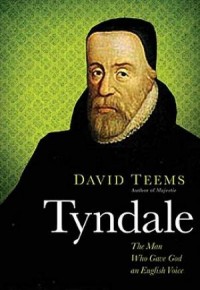
Great Age of the Scholar Translator
Now come the great names of English Bible translators with the pioneer, William Tyndale; whose 1526 printed English New Testament, Pentateuch and Jonah were branded heretical for not being in Latin, forcing him to become a fugitive until he is betrayed and executed.
Ten years or so later, Myles Coverdale built on Tyndale’s work to print the first complete English Bible, revised by John Roger (alias Thomas Matthew - Bible translation is still dangerous work) into the Matthew Bible – the first to be translated into a further 5 languages.
O oure father which art in heauen, halowed be thy name..." (Myles Coverdale Bible)
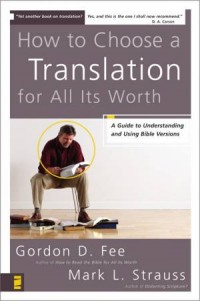
Finally, Bible translation received recognition and royal approval – if for reasons of politics rather than piety. Breaking with Rome in 1534, Henry VIII authorised Coverdale’s revision of Tyndale’s English text as the ‘Great Bible’, for use in all the country's newly Protestant churches.
For the next 400 years all English language Bibles – and many others would trace their direct lineage back to the work the Greek text of Desiderius Erasmus, and the English translations of William Tyndale and Myles Coverdale.
The Continuing Work of Bible Translation
Bibles in this great tradition inlcude the King James Version (KJV), New King James Version (NKJV), New Revised Standard Version (NRSV) and English Standard Version (ESV) - all presented in a wide range of classic and contemporary covers and bindings, and rich with additional practical features and study notes.
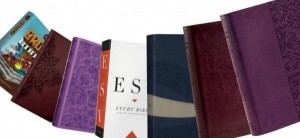
Continuing the translators' tradition of creating readable, relevant English language Bibles, The New International Version (NIV), New Living Translation (NLT) and The Message give you the Word in the words of today's English speakers.
Look out for 'From Great Bible to Great Revivals' - part 2 of "English Bibles: 'Word of God to Words in Print".
Latest Blogs

Easter
What Are The Resurrection Eggs?
Easter is a special time for many people, as we celebrate the resurrection of Christ. One way to help children understand and enjoy the true meaning of Easter is using ‘Resurrection Eggs’.

Lent
Our Guide to the New Lent Bible Study Guides and Courses for 2025
Our guide to the new Lent Bible Study Guides and Courses for 2025. Life is often busy, noisy and at times can even be a little chaotic. Lent is the perfect time to slow down and spend quality time with God in this season of reflection during the run up to Easter Sunday.

How to Care for Your Bible: A Complete Guide
Learn practical tips to protect, clean, and preserve your Bible for years of faithful use.

Bibles
Where Can You Buy a Bible?
Wondering where to buy a Bible? Discover the best places to purchase Bibles today.

Children
Exploring the Nativity Story - Christmas Books for Children
15 Top Christmas Books for Children The Nativity story is a cherished part of Christmas traditions worldwide. It tells children the true story of Jesus' birth in a simple and inspiring way. My guide to the best Christmas books for kids is full of engaging, timeless stories for the whole family. From fun stories with bright pictures and activity books, these titles help your kids learn the true meaning of Christmas.

Children
10 Christmas Activity Ideas for Families
My guide to Christmas activities will help your family come together. You can enjoy festive fun and find moments of peace and quiet.
